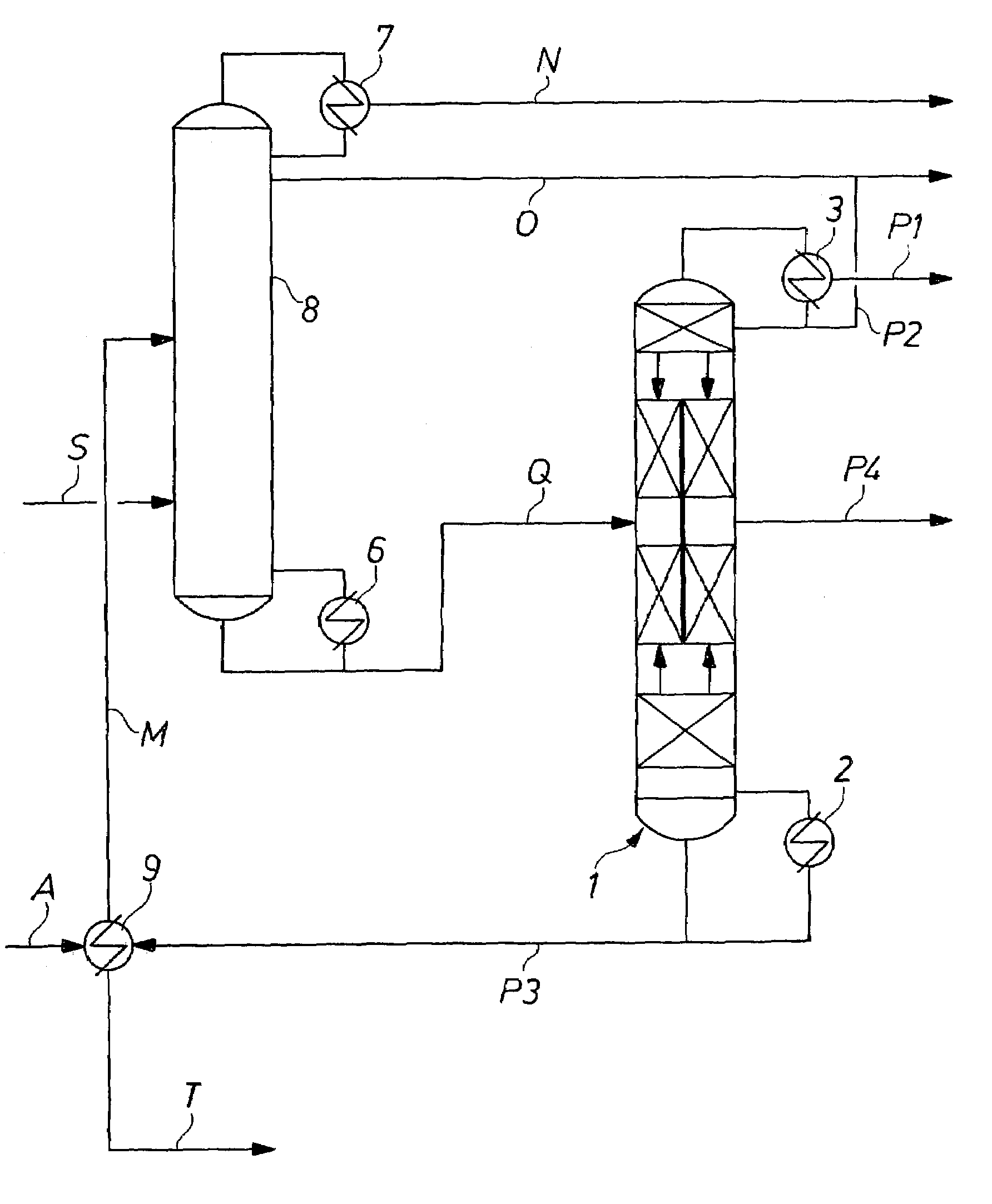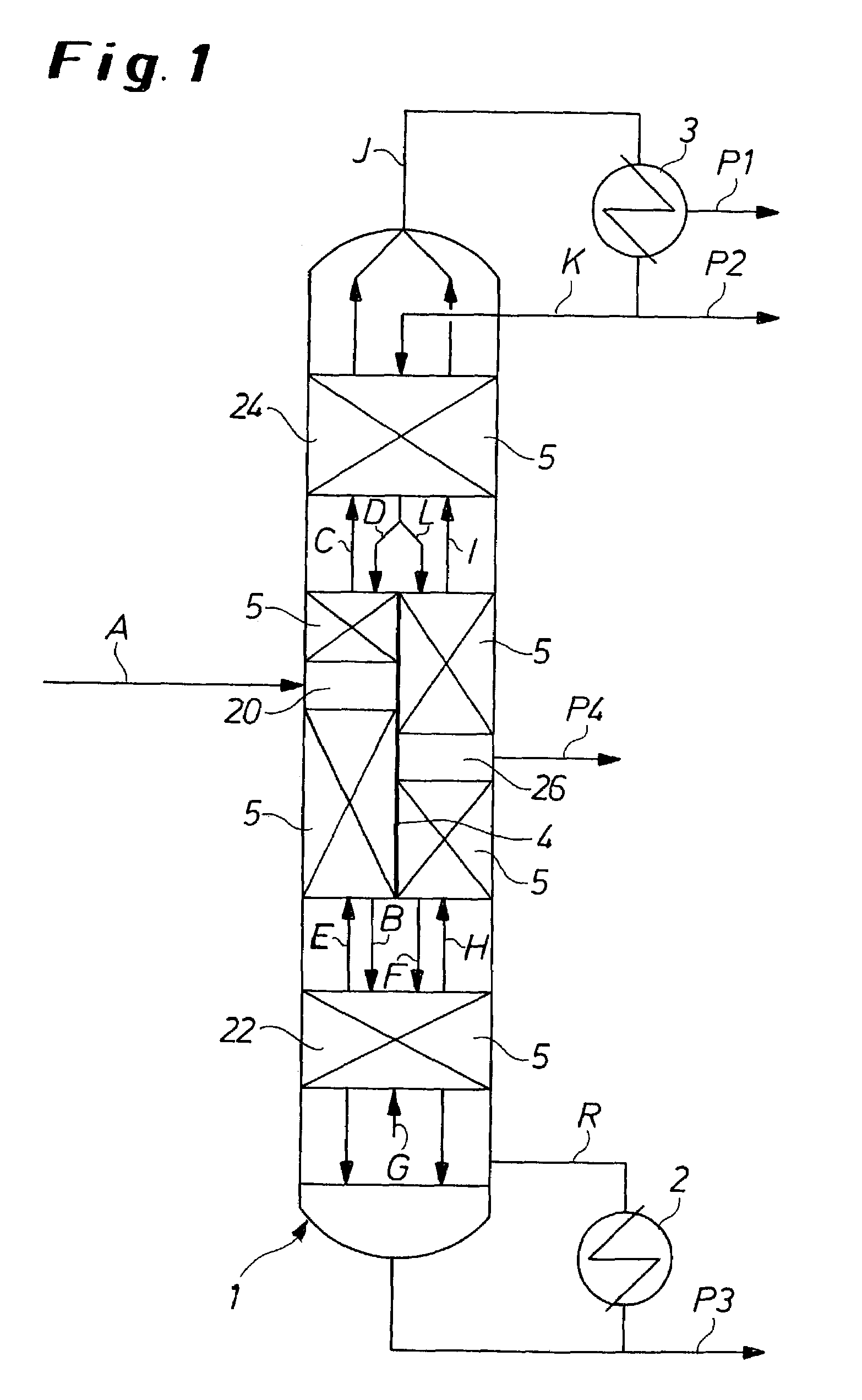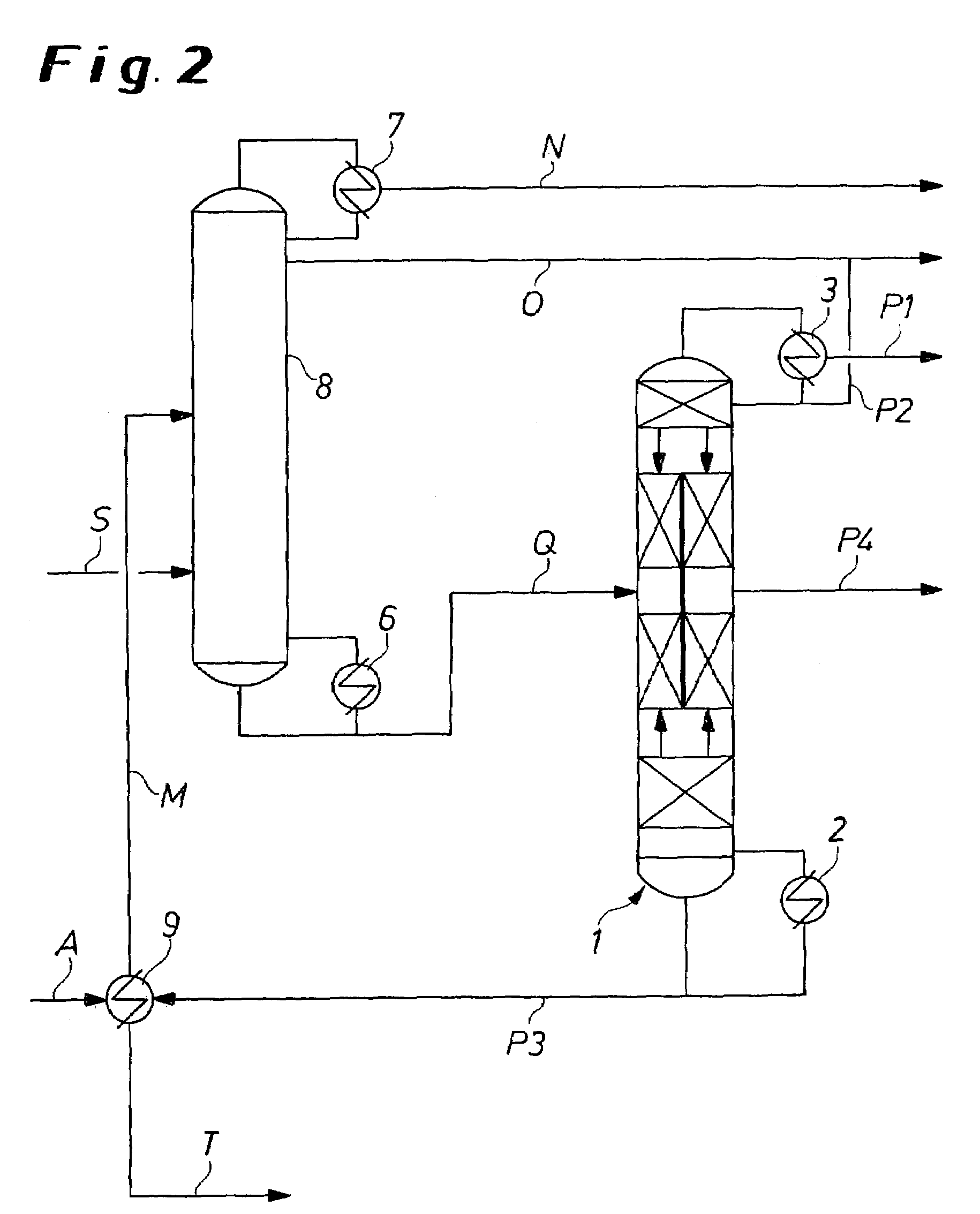Process for the purification of mixtures of toluenediisocyanate incorporating a dividing-wall distillation column
a technology of toluenediisocyanate and distillation column, which is applied in the purification/separation of isocyanic acid derivatives, separation processes, isocyanic acid derivative preparation, etc., can solve the problems of reducing affecting the yield of tdi, and increasing the rate of residue formation, so as to reduce the investment cost, shorten the residence time, and reduce the effect of energy
- Summary
- Abstract
- Description
- Claims
- Application Information
AI Technical Summary
Benefits of technology
Problems solved by technology
Method used
Image
Examples
example 1
[0082]Example 1 has been performed in a dividing-wall distillation column 1 of the type shown in FIG. 1.
[0083]A crude reaction mixture, containing 1000 kg / h toluenediisocyanate is completely dephosgenated and the dephosgenated reaction product is mixed with solvent from process sources (i.e. washers, vacuum systems, etc.), and the volatiles recovered from the residue removal to yield a crude distillation feed A at a temperature of 138° C., which is in the liquid phase at atmospheric pressure. The crude distillation feed A has the following composition by weight: 39.59% toluenediisocyanate (TDI), 0.61% TDI-residue, 0.06% hydrolyzable chloride compounds (HCC), 0.04% low-boilers and noncondensables, with the rest being o-dichlorobenzene. This crude distillation feed A is introduced to a packed dividing-wall distillation column 1 equipped with a single condenser 3 and falling-film reboiler 2, with structured distillation packing 5. The dividing-wall distillation column 1 has 7 theoretic...
example 2
[0088]Example 2 has been performed in a distillation system including a preliminary solvent removal step (preliminary distillation column 8) with pre-evaporation in a heat exchanger 9 and a dividing-wall distillation column 1 such as that illustrated in FIG. 2.
[0089]A crude reaction mixture is completely dephosgenated and the dephosgenated reaction product mixed with solvent from process sources (i.e. washers, vacuum systems, etc.), to yield a crude distillation feed A containing 1250 kg / h toluenediisocyanate, at a temperature of approximately 152° C., which is in the liquid phase at atmospheric pressure. The crude distillation feed A has the following composition by weight: 9.74% toluenediisocyanate (TDI), 0.17% TDI-residue, 0.005% hydrolyzable chloride compounds (HCC), 0.01% low-boilers and noncondensables, with the rest being o-dichlorobenzene. This crude distillation feed A is fed together with the bottoms product P3 from the dividing-wall distillation column 1 to an evaporator ...
example 3
[0095]Example 3 was performed in a distillation system including a preliminary solvent removal step (preliminary fractionation column 8) without pre-evaporation and a dividing-wall distillation column 1 such as that illustrated in FIG. 3.
[0096]A crude reaction mixture was completely dephosgenated and the dephosgenated reaction product was mixed with solvent from process sources (i.e. washers, vacuum systems, etc.) to yield a crude distillation feed A containing 1250 kg / h toluenediisocyanate, at a temperature of approximately 148° C., which is in the liquid phase at atmospheric pressure. The crude distillation feed had the following composition by weight: 23.4% toluenediisocyanate (TDI), 0.41% TDI-residue, 0.015% hydrolyzable chloride compounds (HCC), 0.03% low-boilers and noncondensables, with the rest being chlorobenzene. This crude distillation feed A was fed along with the volatile species S from the residue removal process to the preliminary fractionation column 8.
[0097]The prel...
PUM
| Property | Measurement | Unit |
|---|---|---|
| diameter | aaaaa | aaaaa |
| temperature | aaaaa | aaaaa |
| temperature | aaaaa | aaaaa |
Abstract
Description
Claims
Application Information
 Login to View More
Login to View More - R&D
- Intellectual Property
- Life Sciences
- Materials
- Tech Scout
- Unparalleled Data Quality
- Higher Quality Content
- 60% Fewer Hallucinations
Browse by: Latest US Patents, China's latest patents, Technical Efficacy Thesaurus, Application Domain, Technology Topic, Popular Technical Reports.
© 2025 PatSnap. All rights reserved.Legal|Privacy policy|Modern Slavery Act Transparency Statement|Sitemap|About US| Contact US: help@patsnap.com



